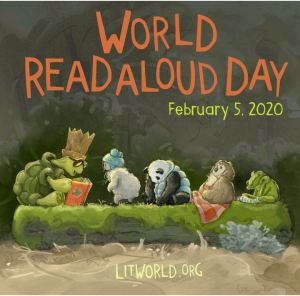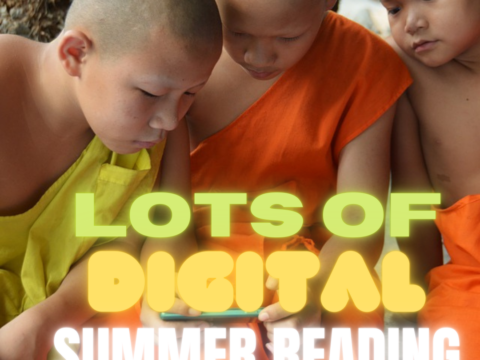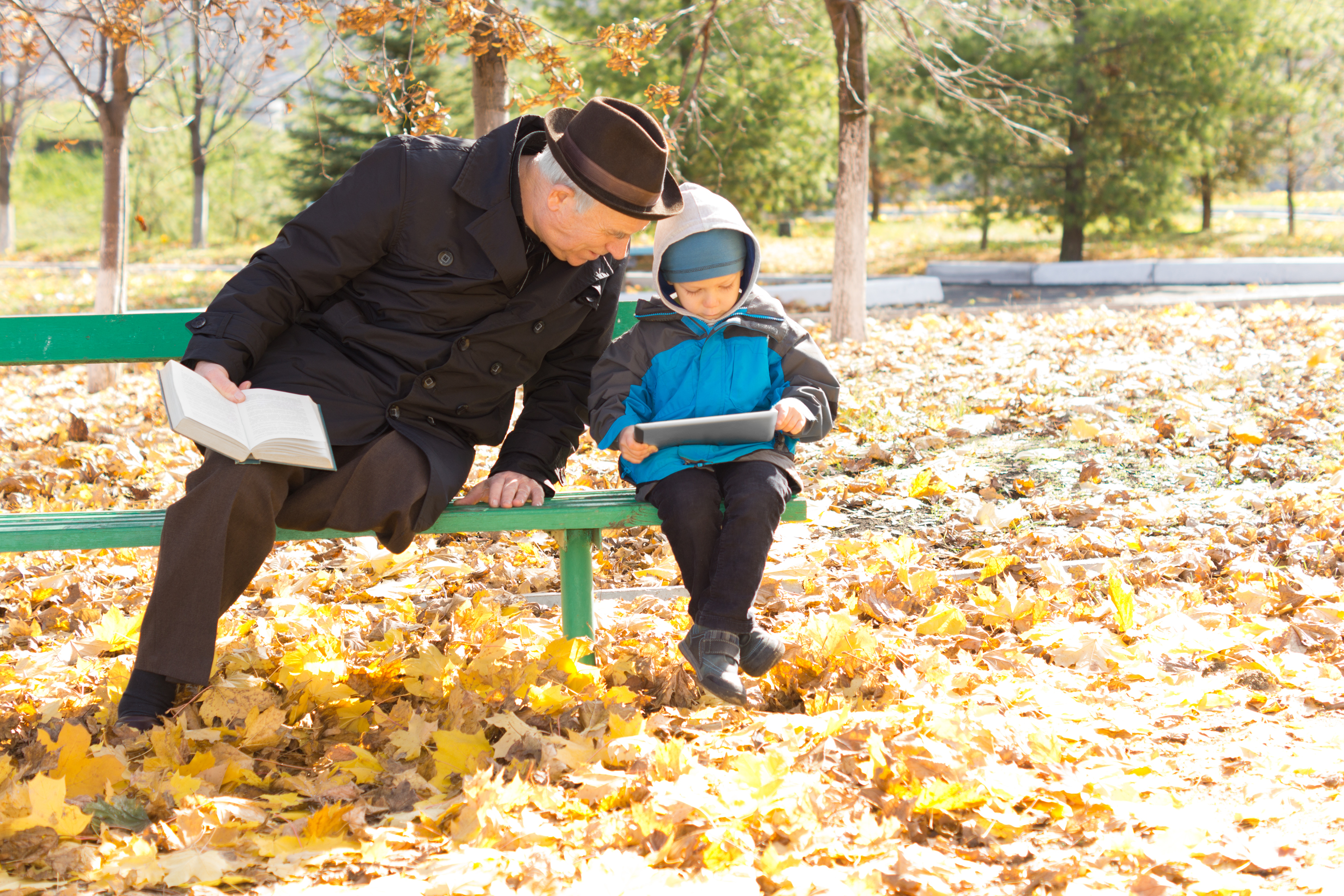 On Feb. 5, 2020, World Read Aloud Day celebrates the pure joy of oral reading with kids of all ages. Created by LitWorld, past years have found over 1 million people in 100 countries joining together to enjoy the power and wonder of reading aloud in groups or individually, at school or home, and discovering what it means to listen to a story told through the voice of another. For many, this is a rare opportunity to hear the passion of a well-told story and fall in love with tales where hearing them reaches listeners on a level nothing else can. Think back to your experiences. You probably sat with an adult, in their lap or curled up in bed. The way they mimicked the voices in the story, built drama, and enthused with you over the story and characters made you want to read more stories like that on your own. This is a favorite activity not just for pre-readers, but beginning and accomplished readers because it’s not about reading the book; it’s about experiencing it through the eyes of a storyteller.
On Feb. 5, 2020, World Read Aloud Day celebrates the pure joy of oral reading with kids of all ages. Created by LitWorld, past years have found over 1 million people in 100 countries joining together to enjoy the power and wonder of reading aloud in groups or individually, at school or home, and discovering what it means to listen to a story told through the voice of another. For many, this is a rare opportunity to hear the passion of a well-told story and fall in love with tales where hearing them reaches listeners on a level nothing else can. Think back to your experiences. You probably sat with an adult, in their lap or curled up in bed. The way they mimicked the voices in the story, built drama, and enthused with you over the story and characters made you want to read more stories like that on your own. This is a favorite activity not just for pre-readers, but beginning and accomplished readers because it’s not about reading the book; it’s about experiencing it through the eyes of a storyteller.
Somehow, as lives for both the adults and children have gotten busier, as digital devices have taken over, as parents turned to TVs or iPads to babysit kids while they do something else, we’ve gotten away from this most companionable of activities. World Read Aloud Day is an opportunity to get back to it.
Importance of reading aloud
There is no more powerful way to develop a love of reading than being read to. Hearing pronunciations, decoding words in context, experiencing the development and completion of a well-plotted story as though you were there are reason enough to read aloud but there’s more. Reading in general and reading aloud specifically is positively correlated to literacy and success in school. It builds foundational learning skills, introduces and reinforces vocabulary, and provides a joyful activity that’s mostly free, cooperative, and often collaborative. Did you know reading aloud:
- Puts children almost a year ahead of those who do not receive daily read-alouds regardless of parental income, education level or cultural
background. (Melbourne Institute of Applied Economic and Social Research) - Lets kids experience different worlds with differing cultures.
- Lets kids learn empathy by hearing how the characters reacted to pain and joy.
- Provides a storified way to unravel thorny problems and answer difficult questions.
- Teaches children strategies for dealing with stressful situations like a new sibling or the first day of school.
- Expands a child’s vocabulary by introducing them to new words that are defined in context (rather than learned from a word list), helping them decipher the nuances of synonyms — why “azure” is a better choice than “blue” or how “scooted” and “scrambled” provide a different image of how a character is walking.
- Exposes kids to different genres and authors that may get them into reading on their own. Who doesn’t have a story of a student who didn’t like reading until they discovered Goosebumps or Harry Potter?
- Builds a bond between reader and readee that starts with the shared emotion of the story.
- Teaches children how to sit quietly and listen while another is talking.
I know — you’re convinced but don’t know how to blend read-alouds into your busy writer’s schedule. Here are some ideas, from a time commitment of a few minutes to a few hours:
Activities for your class
Read-aloud books
Have a library of books intended to be read aloud. These can be both print and digital, to fit all children’s reading preference. When you have classroom reading time, kids can pair up and read to each other.
Here’s a list of online sites with digital books that can be quickly accessed, mostly free, for this activity:
- Aesop Fables
- Owl Eyes (classics)
- Storyline
- Unite for Literacy
Teach students to read with their digital devices
Whether you have iPads, Macs, PCs, or Chromebooks, teach students as young as kindergarten how to access the book curation tool (such as iBooks, RAZKids, Kindle, or another) to find stories to read with each other. This is not necessarily intuitive, especially with the variety of reading apps and devices, often different between home and school. Most digital book readers include a read-aloud function that enables students to have a favorite book read to them. Sometimes it’s native to the app (like Adobe Acrobat/Reader) and other times it’s through the computers operating system (like Kindle’s iOS VoiceOver accessibility feature). Help students find this tool as well as other useful skills like how to turn pages, highlight favorite passages, add a comment, share ideas with other readers, save the page they’re on, and access the story/book from home as well as school. Which of these functions can be performed varies considerably with the reader being used. Become familiar with yours so you can share easily with students.
Read to each other
In this activity, students volunteer to read a story of their choice (approved by you) to classmates. This may be a ten-minute event that opens or ends the school day or an hour-long activity that occurs weekly or monthly. It may even be after school or in the evening. Pick a time that suits your student group and parents if you plan to include them. Here’s how it works:
- Post a sign-up (digitally or on the wall of your classroom) where students volunteer to read a (very) short story to classmates. This may be for World Read-aloud Day or any other day that suits your class environment.
- Students practice their story before reading to classmates. They want to be sure they’re animated, clear, and can pronounce all words well.
- Model how to speak to a group by showing students how you read without stopping, without funny movements or nervous giggles, and loud enough for all to hear. Also model how to be the reader’s audience — listeners respectfully pay attention, sit quietly without jiggling, and don’t interrupt with questions or comments.
- On the day of the event, students read to classmates in a comfortable setting. You may allow them to take questions but limit those to three.
- Parents and other grade-level classmates may attend!
As a class (or in small groups), sit in a circle and create a collaborative on-the-fly story by having each person add a sentence, one at a time, as you go around the circle. You might want to come up with a theme or a description of key characters before beginning to get everyone started. Depending on group size, you can assign tasks to each student beforehand and provide time to prepare. These would include developing a character, setting, plot point, problem, or ending. Each addition must build on the prior students’ storylines and characters
To extend this activity, record the story and use the recording in a writing activity where students write a story based on the Round Robin activity.
Involve parents
Have each parent commit to reading to their child on World Read Aloud Day. Have them take a selfie of the two of them and send it to you to be posted in a gallery. If a parent can’t, have available a group reading event (via a free virtual meeting tool like Google Hangouts or Skype) where you or another teacher will read a story to children on that special evening.
Skype with an author
Arrange with a children’s author to visit your class on World Read-aloud Day to read their book to the class. This is a great opportunity to blend all grade-level classes into one room. Usually, authors will take questions after the reading so have students prepared with queries that are appropriate to the class and author.
Children’s writer Miranda Paul, author of such wonderful books as Are We Pears Yet and I Am a Farmer, has offered to read to classes via a 15-20 minute Skype call. Check out this link. For longer lists, here are Scholastic authors who will Skype with your classroom and a list of Penguin Young Reader authors who Skype.
Join a Skypeathon
Join readers all over the world for a World Read-aloud Skypeathon. On this day, children worldwide will share the experience of reading aloud by reading to each other. You can take part by clicking this link to register your class. Each student will get a Certificate of Participation to applaud the part they played in sharing the love of reading aloud.
***
 Need help organizing a Read-aloud activity? The Scholastic Book Fairs World Read Aloud Day kit is a wonderful guide for planning an event centered on family and parent engagement. Additionally, the American Academy for the Advancement of Science has this suggested list of STEM read-aloud books:
Need help organizing a Read-aloud activity? The Scholastic Book Fairs World Read Aloud Day kit is a wonderful guide for planning an event centered on family and parent engagement. Additionally, the American Academy for the Advancement of Science has this suggested list of STEM read-aloud books:
- A Chicken Followed Me Home, by Robin Page. Simon & Schuster, 2015.
- Feathers: Not Just for Flying, by Melissa Stewart (Illus. by Sandra S. Brannan.) Charlesbridge, 2014.
- High Tide for Horseshoe Crabs, by Lisa Kahn Schnell. (Illus. by Alan Marks.) Charlesbridge, 2015.
- One Plastic Bag: Isatou Ceesay and the Recycling Women of the Gambia, by Miranda Paul. (Illus. by Elizabeth Zunon.) Millbrook, 2015.
- Raindrops Roll, by April Pulley Sayre. Beach Lane Books, 2015.
- Tiny Creatures: The World of Microbes, by Nicola Davies. (Illus by Emily Sutton) Candlewick Press, 2014.
- Tree of Wonder: The Many Marvelous Lives of a Rainforest Tree, by Kate Messner. (Illus. by Simona Mulazzani.) Chronicle Books, 2015.
- You Nest Here With Me, by Jane Yolen and Heidi Stemple. (Illus. by Melissa Sweet). Boyds Mills Press, 2015.
- Waiting for Ice, by Sandra Markle (Illus. by Alan Marks.) Watertown, MA Charlesbridge 2012.
- Winter Bees and Other Poems of the Cold, by Joyce Sidman. (Illus. by Rick Allen.) HMH Books for Young Readers, 2014.
#worldreadaloudday
— image credit: LitWorld
More on reading:
13 Websites That Provide Lots of Digital Books for Summer Reading
Ten Reading-with-Tech Tips You Don’t Want to Miss
How do I create a classroom library checkout system?
Jacqui Murray has been teaching K-18 technology for 30 years. She is the editor/author of over a hundred tech ed resources including a K-12 technology curriculum, K-8 keyboard curriculum, K-8 Digital Citizenship curriculum. She is an adjunct professor in tech ed, Master Teacher, webmaster for four blogs, an Amazon Vine Voice, CSTA presentation reviewer, freelance journalist on tech ed topics, contributor to NEA Today, and author of the tech thrillers, To Hunt a Sub and Twenty-four Days. You can find her resources at Structured Learning.




































